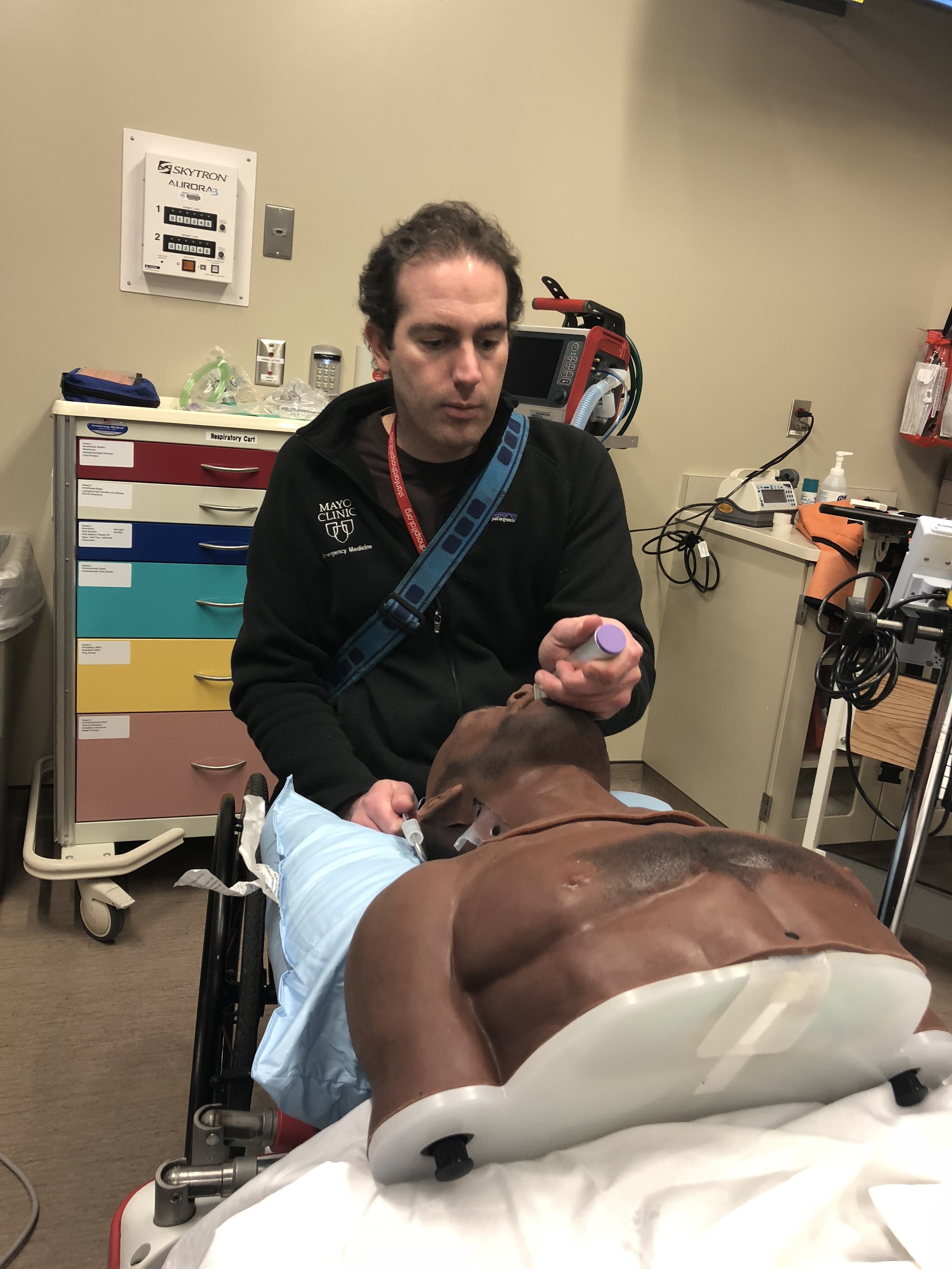Back in the Emergency Department (for simulation work)
/I'm starting to think about what's next. Rehab is wrapping up. I've developed a good base of skills to live life in the wheelchair. Strength and fitness are there, though always in need of improvement. Home is almost ready for me to come back, adapted (at least to some degree) for what we call the "new normal."
Before the accident, I was both practicing emergency medicine at Mayo and working at Medtronic, the leading medical technology firm. I left Medtronic after 4 1/2 awesome years and something like 60-75% international travel to explore some other things. (By the way, I'm incredibly proud of my team and of what we built at Medtronic: a new business focused on developed products and services for underserved patients in emerging markets called Medtronic Labs.) I'd been looking at some other business roles, both in Minneapolis and elsewhere. In the meantime, I was enjoying picking up shifts and working at Mayo Clinic in Rochester and also at some of the other emergency departments in the health system ... I'd missed just practicing medicine. I was scheduled for a pediatric emergency shift the day after the accident. I remember laying on the trail and, after figuring out that I couldn't move my legs, asking Ron to please call my colleague to tell her that I wouldn't be able to work, and that I was sorry. So, yeah, the practice of medicine is important to me -- as is balancing it with entrepreneurship and being a business leader.
Yesterday I went down to Mayo Clinic and did some simulation work -- we often practice procedures on mannequins. We practiced intubation (putting in a breathing tube), central lines (large IVs often placed under ultrasound-guidance in the neck or other strategic locations to allow administration of life-saving medications), and general positioning in the room for physical exams. Two of my colleagues helped to set it up and then offered pointers or suggestions or how to position better. I also got advice and some helpful videos from Francisco Sanchez, an ER doctor at Harvard who had a similar spinal cord injury during his intern year of residency ... he's had some time to figure it out and knows the tricks. That blue strap I'm wearing? It helps to hold me against the back of the chair because, no matter how much core strength I have, I'll always find it difficult to work with two hands out in space and to maintain my balance as I'll need to do to safely perform procedures.
Overall, it was pretty awesome. It felt great to get back into the ER, to experiment and find positions that work, and to know that I'll be able to safely return to the ER and get back to something about which I'm passionate. I still have some work to do before I can return to work, but each small step is one more step closer to doing what I love.
Practicing intubations -- tried a few different positions, but straight on to the head of the bed worked best with my go-go-gadget arms!
Checking out some ears--- two hands out in space means lack of balance.
Central Line placement with an ultrasound on hand




